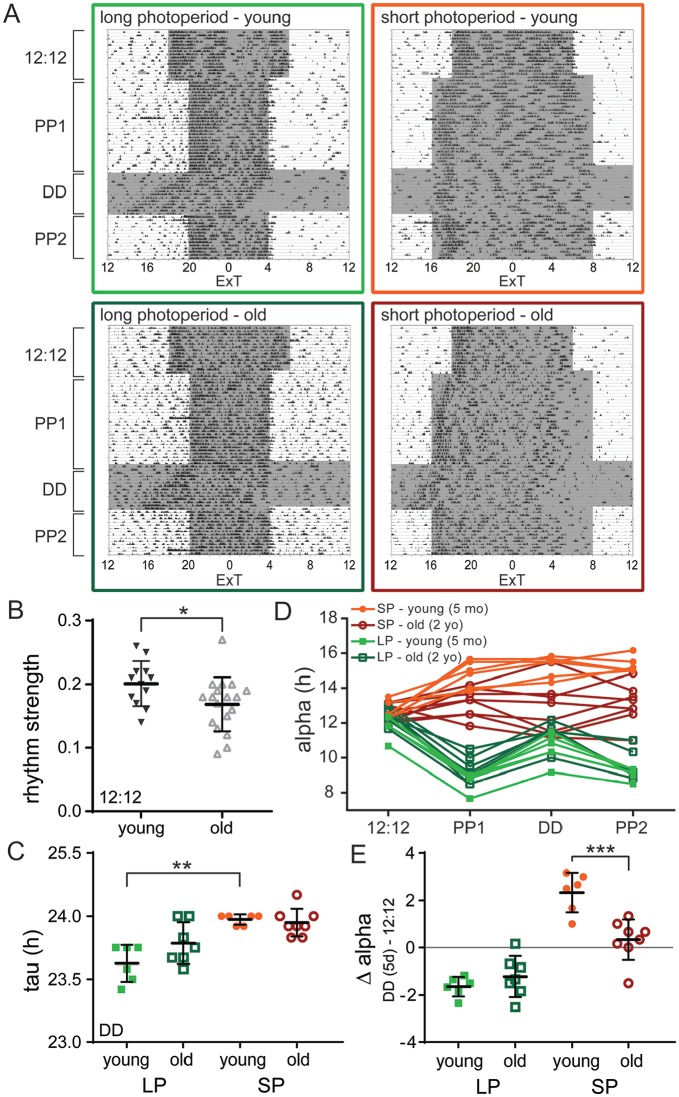Figure 2.
The ability to behaviorally adapt to photoperiod is reduced in old mice. (A) Single-plotted actograms showing representative passive infrared recordings from activity of young (upper panels) and old (lower panels) mice, adapted to long photoperiod (LP; left) and short photoperiod (SP; right). Shaded areas represent the dark period. The time on the x-axis is given in external time (ExT). (B) Rhythm strength of the LD 12:12 period for young (filled triangles; n = 12) and old (open triangles; n = 18) mice. (C) Period (tau) of free-running behavioral rhythm during the period of constant darkness (DD; first 10 days) for young and old mice after adaptation to LP and SP. (D) Activity period (alpha) for each segment of the entrainment protocol: LD 12:12, photoperiod 1 (PP1; LP or SP), constant darkness (DD; first 5 days), and PP2 (LP or SP), with each trace representing 1 mouse. (E) Degree of adaptation to photoperiod represented by Δ alpha, which is determined by calculating the difference in alpha between LD 12:12 and the DD (5-day) period. Δ alpha is given for young and old mice adapted to LP and SP. Filled circles represent SP, young (n = 6); open circles represent SP, old (n = 8); filled squares represent LP, young (n = 6); and open squares represent LP, old (n = 7). Bars indicate mean ± SD. *p < 0.05, **p < 0.01, ***p < 0.001, 1-way analysis of variance, corrected for multiple comparison with Sidak’s test.

